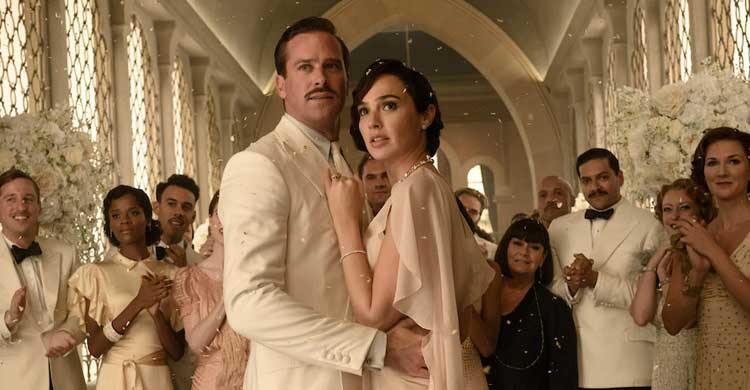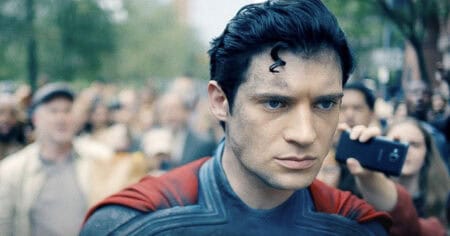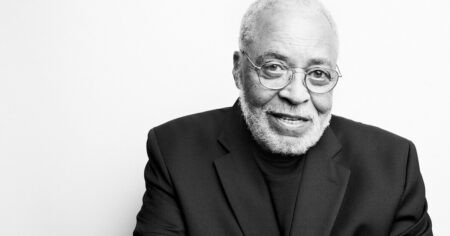Kenneth Branagh returns to the role of Hercule Poirot once more in Death on the Nile and has certainly learned some lessons. His 2018 film Murder on the Orient Express felt lacking. Maybe it was the exaggerated quirks of his performance or the rigid direction but it just wasn’t working.
Death on the Nile isn’t great but it is an improvement over the last film. It has better pacing, better performances, and even a toned-down mustache. The result is a much better depiction of Agatha Christie’s classic character.
The Detective Returns in Death on the Nile
Branagh’s portrayal of Poirot has a bit more character in Death on the Nile. Aside from his penchant for sweets and orderly displays, he has a more illuminated past and internal struggle. It’s perhaps a bit more overt, however, as Death on the Nile begins with his military backstory.
At least he doesn’t feel as awkward in the role. Perhaps it’s because this story finds him crossing paths with the familiar friend of Bouc (Tom Bateman). It places him a bit at ease, especially thanks to Bateman’s eccentric performance of a man excited to be the first man to fly a kite on an Egyptian pyramid.
A Honeymoon Murder
Poirot is in Egypt to attend the honeymoon vacation of the recently wed Linnet (Wonder Woman’s Gal Gadot) and Simon (Armie Hammer). However, as scenes prior to the marriage showcased, Simon’s ex of Jackie (Emma Mackey) hasn’t gotten over him. She’s so obsessed she follows them on their honeymoon.
The honeymoon comes about with a big cast of family and friends. They take a cruise down the Nile river to visit all the popular landmarks. And then murder ruins it all when Linnet turns up dead one morning.
Poirot is on the case and there are plenty of suspects. There’s the quietly bitter Linus (Russell Brand), Linnet’s former fiancé, and the greedy Andrew (Ali Fazal), Linnet’s cousin and lawyer. There’s Linnet’s communist godmother Marie (Jennifer Saunders) as well as her nurse Mrs. Bowers (Dawn French).
Everybody may have something to gain from Linnet’s death. It makes Poirot’s case a tough one, especially when the body count begins to rise. There’s far more at play here than just revenge and jewelry.
A Mixed Bag of Performances
Whereas the previous film had an almost timid nature to the ensemble casting, there are some pretty remarkable performances in Death on the Nile. A highlight is Sophie Okonedo as the jazz singer Salome Otterbourne. She plays the heck out of this role that finds her being a bit of a femme fatale that could entice Poirot if he weren’t always on the job.
A weak point, however, is Gal Gadot. Her acting chops are just not in top form for this picture, making that joke about her awkward delivery about champagne a bit more cringe-worthy. She sticks out like a sore thumb.
Thankfully, the better performances outweigh the weaker ones. Letitia Wright (Black Panther/Black Panther: Wakanda Forever) has some pep as Salome’s niece and Annette Bening is stellar as the aged painter and mother of Bouc, Euphemia. Saunders and French are also a lot of fun to watch for their exchanges.
Better Timing
What I’ve noticed as a common criticism of the film is that it spends less time getting to the murder in its first act. In truth, this is what makes the film better. We get a chance to breathe with the characters and partake in their joy before tragedy befalls them.
It’s this staging that makes the film better than the last Poirot movie. While Murder on the Orient Express breezes by in its attempt to keep you guessing, we only learn about those characters when Poirot questions them. In Death on the Nile, we get to know them more before the first kill.
A Gorgeous Vacation
The cinematography is also more compelling this time around. We get plenty of warm and beautiful colors as the boat progresses around Egypt. This includes some sublime establishing shots of the sun rising with animals in the distance.
The scenes on the boat are also better shot than the train in the last picture. We get some great blocking behind walls and glass to separate characters. This dramatic staging works well and keeps the eyes just as engrossed as the mind.
All that being said, the very shooting style of Death on the Nile feels a bit all over the place. We get some great long shots for establishing the environment but also a lot of odd close-ups and underwater shots. It feels as though there’s a desperation to find a handful of great shots, creating more of a buffet of great shots that sometimes don’t connect all that well.
Conclusion: Death on the Nile
While still not a great take on Poirot, Death on the Nile has its small moments of brilliance. Most of the cast performs well and most of the direction is unique. It’s most definitely an improvement as it finds more ways to go up than down after Orient Express.
If you’re a fan of David Suchet’s take on Poirot, there’s still not much present to win over those who have a specific version of Poirot being short, fat, and balding. Thankfully, Branagh doesn’t seem to be trying too hard with the accent and goes more natural than faithful. It’s enough to present a passable mystery even if this isn’t the best interpretation of the classic murder-mystery tale.
What did you think of Death on the Nile? Was it better than Murder on the Orient Express or worse? Let us know in the comments below.
Death on the Nile is currently playing in theaters.





